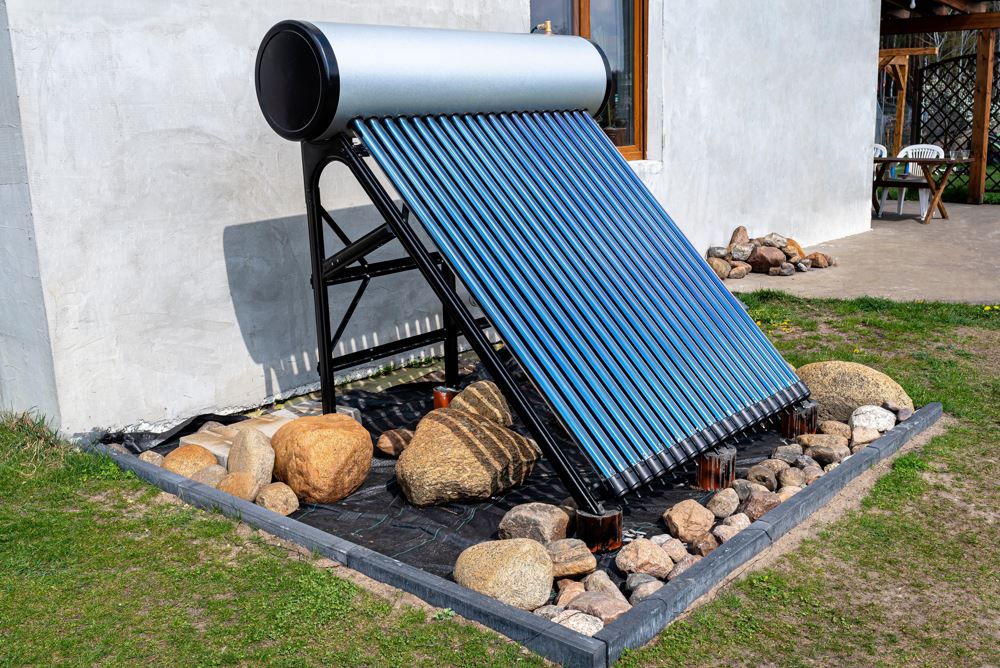The global solar water heater market was previously valued at about $4.7 billion in 2019 and is projected to reach $6.7 billion by 2027, with a growth rate and at a CAGR of 6.1% from 2020 to 2027. Solar water heaters adorn most houses and are an ideal sustainable choice for most families today.

Solar water heaters, also known as domestic solar water heaters are a cost-effective way to avail of hot water supply from. Based on using the principle of solar radiation absorption, let’s take a look at the working principle of a solar water heater to understand it better.
One can say that it is one of the popular home equipment. It is an inexpensive and affordable manner to avail of hot water without having to spend a fortune on a light bill as in the case of normal water heaters. Do Solar water heaters function with respect to sunlight and sunlight radiation and the upside? One can use as much sunlight as needed given it’s free to use, accessible and doesn’t entail money for usage.
Do Solar Water Heaters Work On Similar Components?
Well, yes. While solar water heaters are manufactured and distributed across India most of these have common components such as:
- An insulated storage tank to help store hot water.
- A supporting stand.
- Connective pipes and connecting instruments.
- A solar collector helps connect solar energy.
While solar water heaters now come with different designs, common components play an important role in their working:
- Collector: This includes a batch collector, evacuated tube collector and flat plate collector.
- Insulated Storage Tank: consisting of inlets and outlets connected within the solar water heater.
See also: Advantages of Installing Solar Water Heater
The working principle is based on circulation systems which comprise of:
Active Circulation System: This is also known as forced circulation. In this circulation system, the controllers, valves, and electric pumps are used to coerce or forcefully transfer water from the collector to the storage tank.
Passive Circulation System: Passive circulation systems consist of a storage tank covered with transparent material allowing the sun to heat the water. Water from the storage tank then flows into the plumbing system. This circulation system works best in areas with temperatures that rarely fall below the freezing point.
Direct Circulation System: In the direct circulation system, water gets circulated via solar collectors wherein it gets heated by the sunlight. This warm water is piped to a tankless water heater and is permissible for direct use. However, this system is useful in places with no snowfall. Using this system in a cold climate will cause the system to freeze without protection.
Indirect Circulation System: This is also known as a closed-loop circulation system. In the indirect circulation system, non-freezing liquid is stored in collectors and the temperature of the sun heats this liquid. It then passes through a heat exchanger present in the storage tank.
Furthermore, this process transfers heat from the non-freezing liquid to water present in the tank and the non-freezing liquid then reaches back to the collector apparatus.
How does a solar water heater work? What are its working principles?
Initially, solar water heaters were large containers of metal painted black in colour as black absorbs a lot of heat quickly and is a good conductor of heat. Hence, when the container painted black in colour heats up due to sunlight, water within these containers also gets heated. While this process was useful back then, it was pretty time-consuming.
Over time solar water heaters have undergone technological changes wherein solar panels, solar panel systems, and solar cells are introduced and developed. While these solar water heaters work on the same solar energy absorption, they are much more well-formed, and efficient as compared to the initial solar water heaters.
These include insulated storage tanks, solar collectors, pumps, and temperature gauges as well as a result of which the current solar water heaters absorb more solar energy and heat water quickly and efficiently.
See also: How to Get Subsidies for Solar Water Heaters
As for the working principle:
- The rays of the sun fall on the solar collector which comprises a black absorbing surface called the absorber. The absorber transfers heat energy flowing through it by absorbing solar radiation.
- Then, the heated water is collected in a tank. The tank is insulated to aid the prevention of heat loss. Further, the circulation of water entails from the tank via the collector gets back to the tank automatically.
- The insulated water storage tank is necessary to collect and store warm water which can be used in the evening.
Conclusion:
A solar water heater with 100 litres capacity can save up to 1500 units of electricity annually. Which is all the more reason to buy a solar water heater.
Solar water heaters are the present and future of sustainability. Just like most appliances in our homes, there is a curiosity surrounding its working principles and this blog must’ve answered most of your doubts. So purchase your solar water heater and take one step forward towards sustainability.
